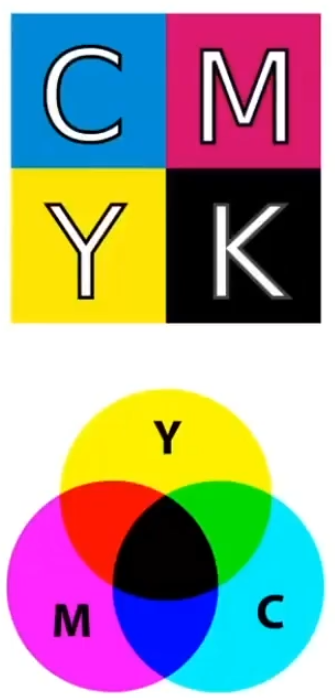Light Fields
Light Fields: The intensity of light traveling in any direction from any position
The Plenoptic Function (全光函数)
Grayscale snapshot:
- Seen from a single view point
- At a single time
- Averaged over the wavelengths of the visible spectrum
Color snapshot:
- Seen from a single view point
- At a single time
- As a function of wavelength
A movie:
- Seen from a single view point
- Over time
- As a function of wavelength
Holographic movie:
- Seen from ANY viewpoint
- Over time
- As a function of wavelength
The Plenoptic Function:
- Can reconstruct every possible view, at every moment, from every position, at every wavelength
- Contains every photograph, every movie, everything that anyone has ever seen! it completely captures our visual reality! Not bad for a function...
Ray
ray:
- 3D position
- 2D direction
Infinite line: Assume light is constant (vacuum), 4D:
- 2D direction
- 2D position
- non-dispersive medium
Light Field Camera
Integral Imaging ("Fly's Eye" Lenslets): Spatially-multiplexed light field capture using lenslets
- Impose fixed trade-off between spatial and angular resolution
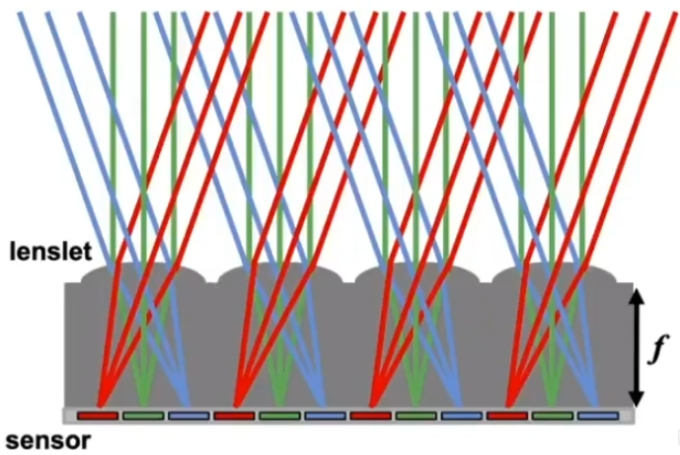
The Lytro Light Fields Camera: Microlens design. Most significant function is Computational Refocusing (Virtually changing focal length & aperture size, etc. after taking the photo)
Understanding:
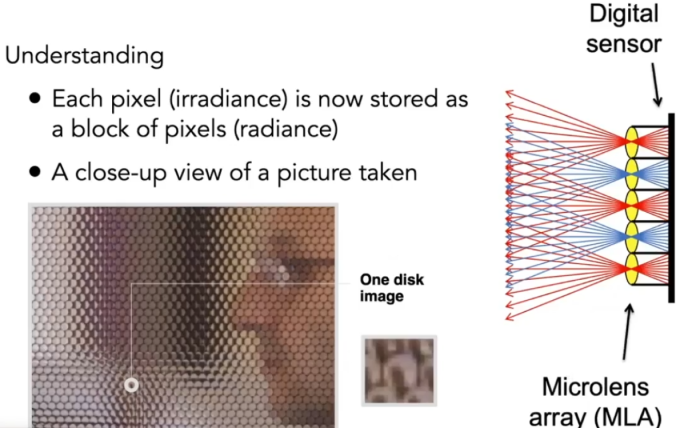
How to get a "regular" photo from thelight field photo?
- A simple case — always choose the pixel at the bottom of each block
- Then the central ones & the top ones
- Essentially "moving the camera around"
Computational / digital refocusing
- Same idea: visually changing focal length, picking the refocused ray directions accordingly
In all, all these functionalities are available because: The light field contains everything
Any problems to light field cameras?
- Insufficient spatial resolution(same film used for both spatial and directional information)
- High cost (intricate design of microlenses)
- Computer Graphics is about trade-offs
Color
Light
The Visible Spectrum of Light: Electromagnetic radiation
Oscillations of different frequencies (wavelengths)
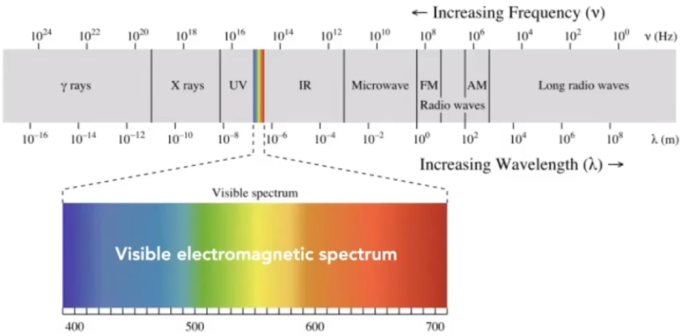
Spectral Power Distribution (SPD, 谱功率密度)
Salient property in measuring light
The amount of light present at each wavelength.
Units:
- radiometric units / nanometer (e.g. watts / nm)
- Can also be unit-less
Often use "relative units" scaled to maximum wavelength for comparison across wavelengths when absolute units are not important
Linearity of Spectral Power Distribution:
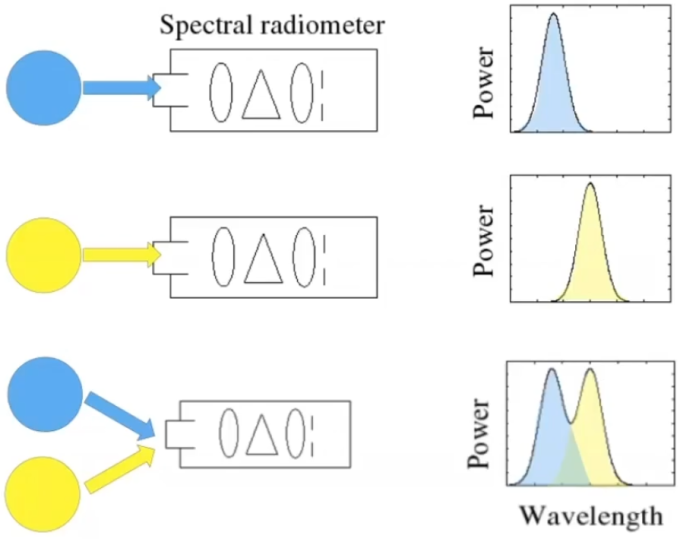
Color
Color is a phenomenon of human perception; it is not a universal property of light. Different wavelengths of light are not "colors"
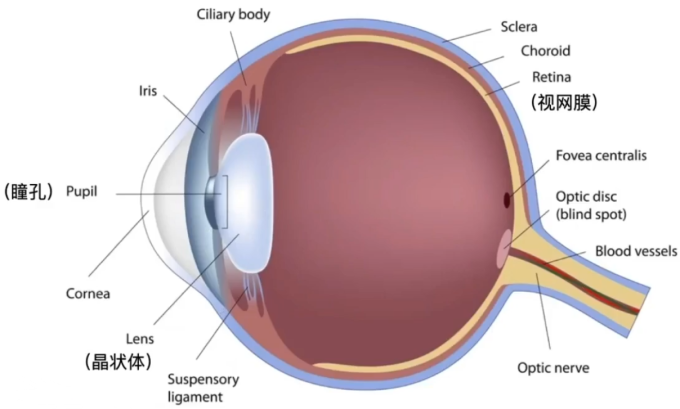
Retinal Photoreceptor Cells (感光细胞): Rods and Cones
Rods are primary receptors in very low light ("scotopic" conditions), e.g. dim moonlight
- ~120 million rods in eye
- Perceive only shades of gray, no color
Cones are primary receptors in typical light levels ("photopic")
~6-7 million cones in eye
Three types of cones, each with different spectral sensitivity:
S, M, and L (corresponding to peak response at short, medium, and long wavelengths)
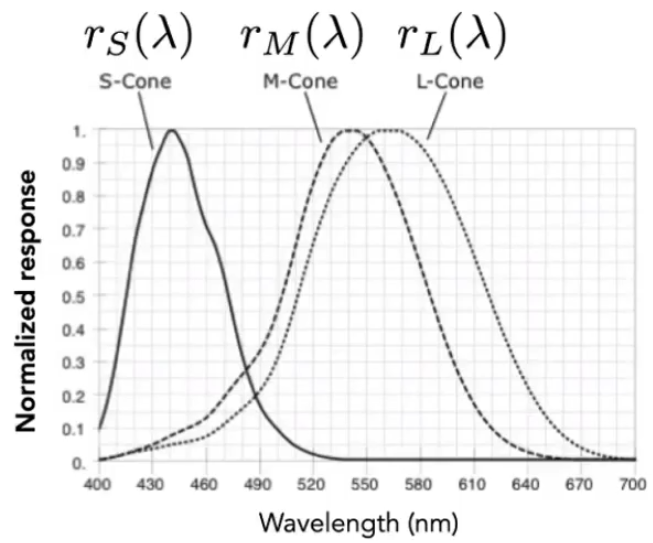
Provide sensation of color
Metamerism (同色异谱): Metamers are two different spectra (
- These will appear to have the same color to a human
The existence of metamers is critical to color reproduction
- Don't have to reproduce the full spectrum of a real world scene
- Example: A metamer can reproduce the perceived color of a real-world scene on a display with pixels of only three colors
Additive Color:
- Given a set of primary lights, each with its own spectral distribution (e.g. R,G,B display pixels):
- Adjust the brightness of these lights and add them together:
- The color is now described by the scalar values:
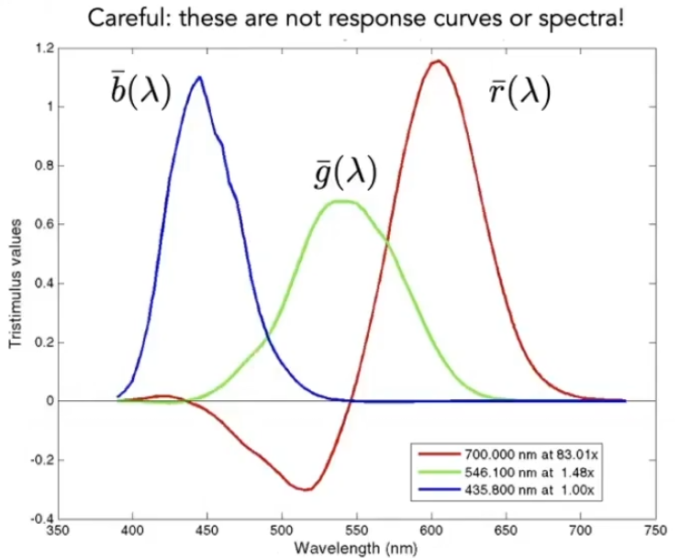
Color Spaces
A Universal Color Space: CIE XYZ
- Imaginary set of standard color primaries X,Y,Z
- Primary colors with these matching functions do not exist
- Y is luminance (brightness regardless of color)
Designed such that
- Matching functions are strictly positive
- Span all observable colors
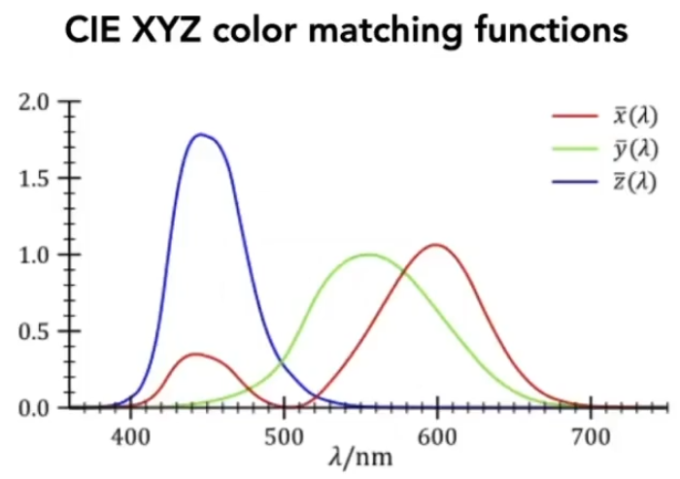
Separating Luminance, Chromaticity:
Luminance: Y
Chromaticity: x,y,z, defined as
since
, we only need to record two of the three usually choose x and y, leading to (x,y) coords at a specific brightness Y.
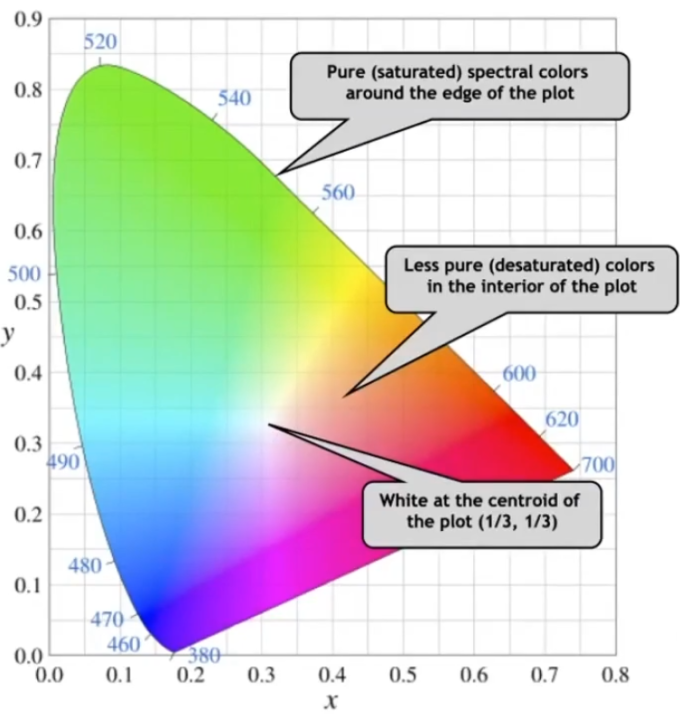
The curved boundary
- named spectral locus
- corresponds to monochromatic light (each point representing a pure color of a single wavelength)
Any color inside is less pure.
Gamut
- Gamut is the set of chromaticities generated by a set of color primaries
- Different color spaces represent different ranges of colors
- So they have different gamuts, i.e. they cover different regions on the chromaticity diagram
Standardized RGB (sRGB):
- makes a particular monitor RGB standard
- other color devices simulate that monitor by calibration
- widely adopted today
- gamut (色域) is limited
HSV Color Space (Hue-Saturation-Value)
Axes correspond to artistic characteristics of color. Widely used in a "color picker"
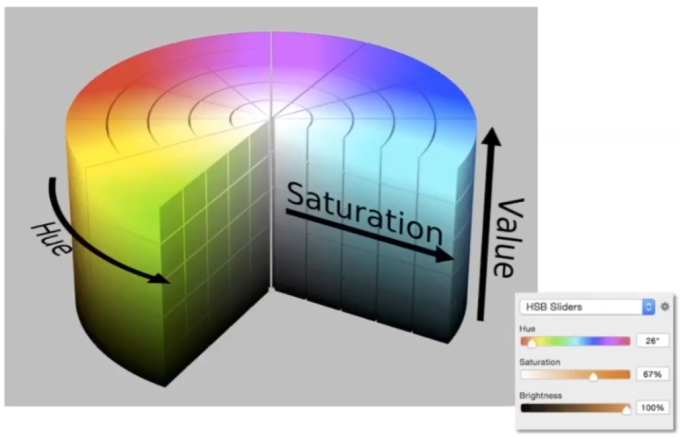
Hue (色调):
- the "kind" of color, regardless of attributes
- colorimetric correlate: dominant wavelength
- artist's correlate: the chosen pigment color
Saturation (饱和度):
- the "colorfulness"
- colorimetric correlate: purity
- artist's correlate: fraction of paint from the colored tube
Lightness (or value) (亮度):
- the overall amount of light
- colorimetric correlate: luminance
- artist's correlate: tints are lighter, shades are darker
CIELAB Space (L*a*b*): A commonly used color space that strives for perceptual uniformity
L* is lightness (brightness)
a*and b* are color-opponent pairs
- a* is red-green
- b* is blue-yellow
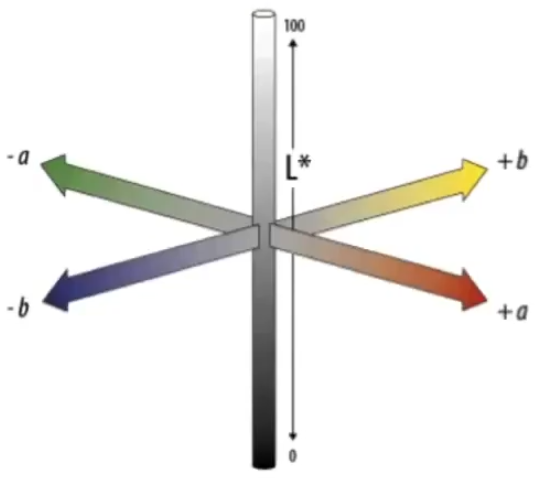
Opponent Color (互补色) Theory: There's a good neurological basis for the color space dimensions in CIELAB
- the brain seems to encode color early on using three axes: white — black, red —green, yellow — blue
- the white — black axis is lightness; the others determine hue and saturation
CMYK: A Subtractive Color Space
Subtractive color model: The more you mix, the darker it will be
Cyan, Magenta, Yellow, and Key widely used in printing
